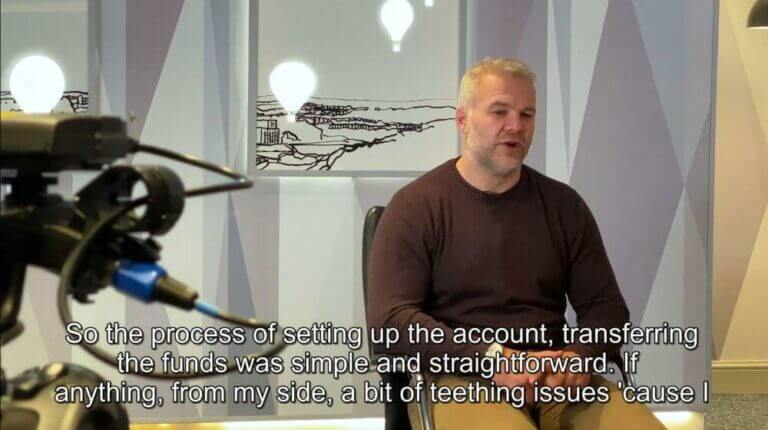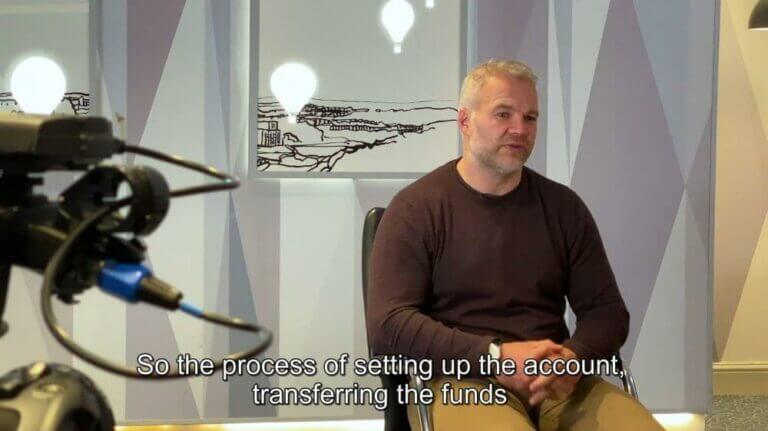Creating professional subtitles is nothing short of an art. It takes time, care and technical knowledge. In 2021, people are becoming increasingly aware of the importance of subtitling videos, not only for deaf and hard-of-hearing audiences but also for hearing audiences. As we mentioned in a previous post, most social media users watch videos on mute!
In the age of reduced budgets and automated subtitles on YouTube and other platforms, it can be tempting to disregard the importance of having videos professionally subtitled. However, just like bad translations, subpar subtitles are detrimental to your brand: viewers might not only stop watching, but could be left with the impression that your business doesn’t have quality as a priority and, in the case of deaf and hard-of-hearing customers, that you don’t care about them.
Transcripts vs subtitles
Since they say a picture is worth a thousand words, let’s illustrate why professional subtitles are worth it with two screenshots. Which is the most legible?
This:

Or this:

The first image reflects what happens when a word-for-word transcript is added to a video instead of carefully crafted subtitles. In this case, someone still has to synchronise the text with the specific timing in the video (which we call “time-coding” or “spotting”). However, without appropriate software and training, spotting takes much longer than necessary and the results are often substandard despite all the effort involved. Text crowds the screen, and information is difficult for the viewer to process because line breaks aren’t in places that seem natural, etc. The timing of the subtitles also doesn’t feel right; they do not follow the speech rhythm or the editing of the video (shot changes, fade-ins, etc.).
The second image shows a subtitle created following industry guidelines. These put audience experience at the forefront. The subtitle is neat, easy to read, and timed just right so that it follows the audio and the editing of the video.
Do you want to learn more? Keep reading to learn about subtitle guidelines and how professional subtitles are different from amateur and automated ones.
Professional subtitles: what makes them professional?
Character limits
Imagine going to the cinema to watch a foreign film. The film starts, and as the dialogue begins, the first subtitles appear. You stare in horror: the subtitles go from the left corner of the screen all the way to the right one. You move your head from side to side to read and barely have time to look at the actual shot.
The above is an extreme example, but avoiding this situation is exactly why subtitles use proportional fonts and have character limits. Keeping the text clustered on the screen gives viewers more time to glance at the action and read the text.
Character limits vary, but generally they range between 37 and 42 characters per line.
Reading speed
BBC guidelines state that subtitles should be displayed at 160-180 words per minute (WPM) for a general audience to keep up. In comparison to that, Romero-Fresco’s analysis of BBC programmes shows that speakers reach 245 WPM in interviews and weather reports!
We can speak faster than we can read; consequently, verbatim subtitles (i.e. subtitles that contain all the uttered words) are often too fast and have to be adapted, becoming edited subtitles.
In the English language, 180 WPM corresponds to 15 characters per second (CPS), the more widespread standard when it comes to reading speed. Nowadays, however, some online streaming services use 17-20 CPS for adult audiences.
Clarity
In relation to the previous point, professional subtitles do not contain meaningless hesitations and repetitions that might make their way into, for example, the transcript of an interview. This way, we ensure that they are coherent grammatical units that are easy to understand and fast to read.
The only scenario in which it would make sense to preserve repetitions and grammatical mistakes is when they are part of how a character is portrayed, for example, in a film or TV series.
Subtitle lines
Subtitles should should be easy to read and not hamper the viewing of a video. Too many lines will crowd the screen and cover the image, and they make it harder for the eyes to focus.
For this reason, subtitles should be only one or two lines at most. In subtitles for the deaf and hard-of-hearing (SDH), the subtitler may use three lines if there is no alternative way of keeping subtitles close to verbatim; deaf and hard-of-hearing audiences who cannot access the audio may consider edited subtitles a form of censorship.
In a two or three-line subtitle, there are three things to keep in mind when splitting the text, in this order:
- the character limit per line;
- the need for clarity (i.e. keeping grammatical units together, so for example not leaving an article like “the” hanging at the end of the line on its own, or separating a prepositional verb like “setting up” into two, etc.);
- the lines in a subtitle should be more or less the same length so that the eye has less distance to travel.
Timing to shot and audio
When subtitles start just before a shot change (a change in camera angle or a scene change) viewers tend to reread them. When subtitles start too many frames before or after the corresponding audio, it feels jarring. Well-timed subtitles, however, flow seamlessly with the audio and the edit of the content.
Professional subtitles are timed to shot changes; they end right before the shot changes and start with the new shot. Other timing rules specify that gaps between subtitles should be at least 2 frames and that a subtitle must remain on screen for at least 1 second and at most 6 seconds.
These rules affect the timing of the subtitles, and therefore, the reading speed and how much text we can afford to use in each subtitle.
But, you may ask, what if someone starts speaking just before a shot change? What if a speaker talks very fast and we want to bring in their subtitle early (so that it is still readable and does not hang over another speaker’s words)? Each broadcaster has guidelines covering these situations, and they involve counting frames one by one! Here are the Netflix guidelines; a glance is enough to understand that this is not an easy business!
We hope that this article has given you some insight into everything involved in creating professional subtitles. It can be daunting, but we’re here for you to take care of your subtitling needs: with Web-Translations, you can feel confident that your videos have been expertly subtitled. If you want more information, please get in touch!
17 March 2021 11:41
